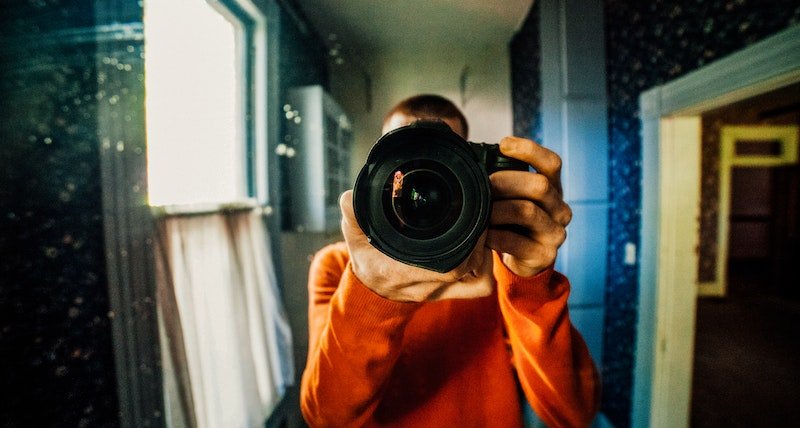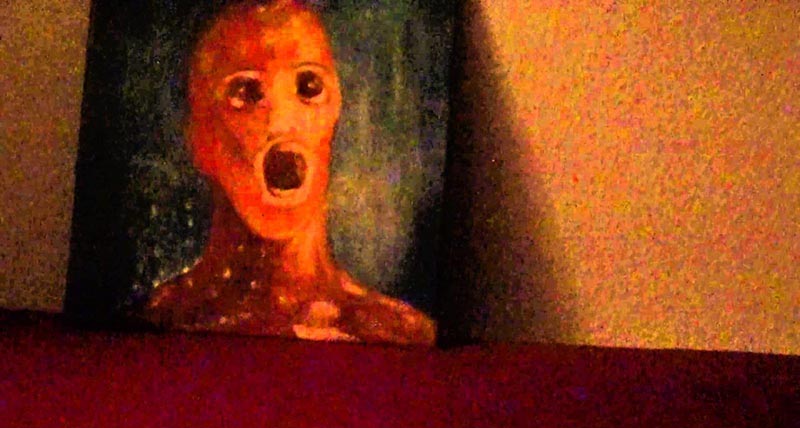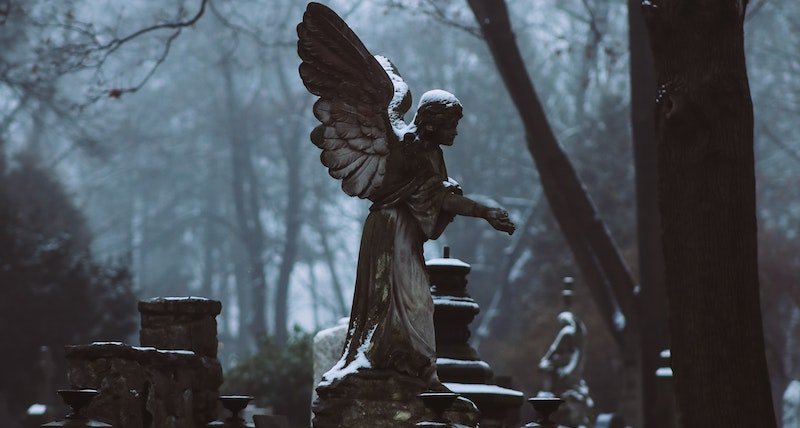Among these tools, the camera stands out for its ubiquity and importance.
A ghost hunting camera is not just a tool; it’s an investigator’s eyes in the dark, a silent witness to events that defy explanation.
Table of Contents
The Role of Cameras in Paranormal Investigations
Whether we talk about ghost hunting equipment for beginners or a paranormal kit for professionals, the camera serves multiple purposes when embarking on a ghost hunting expedition.
Firstly, it acts as a device for documentation. Paranormal investigators rely heavily on visual evidence to support their findings.
A camera, especially one equipped with features suitable for hunting ghosts, can capture anomalies like apparitions, ghost orbs, or unexplained movements that the naked eye might miss.
Secondly, cameras provide a means of review. Investigators often find themselves in dark, quiet locations for hours on end. It’s easy to miss something in the moment.
With a camera, they can record their investigations and review the footage later, often uncovering surprising findings in the process.
Finally, cameras equipped with specific technologies can see what human eyes cannot.
Infrared, full-spectrum, and night vision capabilities allow investigators to pierce the darkness and potentially detect entities or energy shifts that are invisible to the naked eye.
In essence, a camera is a crucial piece of any ghost hunter’s toolkit. It’s more than just a recording device; it’s a gateway to another realm, a bridge between the seen and the unseen.
Whether you’re a seasoned researcher or a curious beginner, understanding the role and importance of the camera in ghost hunting is the first step to a successful investigation, regardless of where you choose to do it.
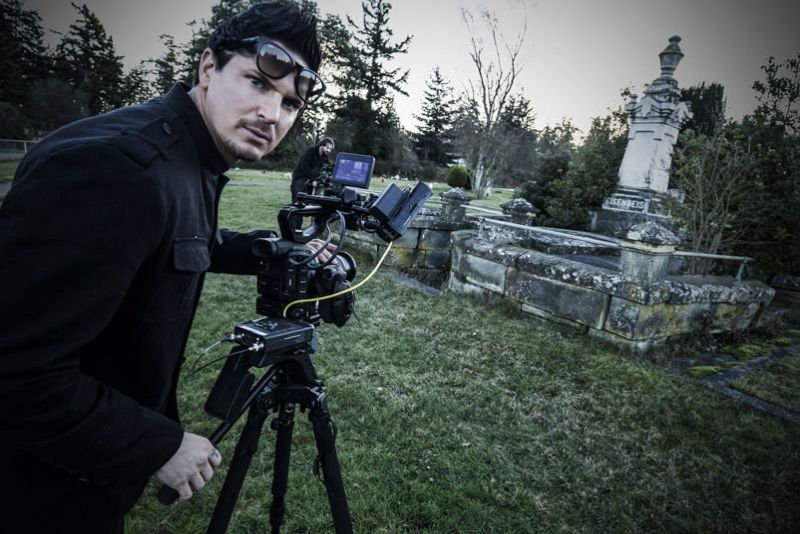
Different Types of Ghost Hunting Cameras
Not all cameras are created equal. Different types of cameras offer unique features and capabilities that can be advantageous in paranormal investigations.
Infrared Cameras
Infrared cameras, often referred to as thermal imaging cameras, are a popular choice among ghost hunters. These cameras detect heat signatures and represent them as visual images.
The theory is that paranormal entities may cause temperature fluctuations in their surroundings, and an infrared camera can capture these changes.
Related: Cheap Ghost-Hunting Equipment: Your Guide to Affordable Paranormal Tools and Accessories
Infrared cameras can detect subtle changes in temperature, often missed by the naked eye, and display them in a range of colors.
Hotter areas are usually shown in red, while cooler areas are depicted in blue or green. This feature can be handy in detecting unseen entities or energy shifts in a room.
Night Vision Cameras
Night vision cameras are another essential tool in a ghost hunter’s arsenal.
These cameras amplify existing light, such as moonlight or starlight, to create a brighter, more detailed image in low-light conditions. Some night vision cameras also use infrared light to enhance their imaging capabilities.
On the same topic: A Comprehensive Guide to Ghost Hunting Equipment: Everything You Need to Know about Paranormal Investigation Kits
Night vision cameras are particularly useful in ghost hunting as paranormal activity often occurs in dark or low-light environments.
These cameras allow investigators to see and record activities in the dark that would otherwise be invisible to the naked eye.
SLS Cameras
Structured Light Sensor (SLS) cameras are a relatively new addition to the field of ghost hunting. These cameras use a projector to cast a grid of dots onto a scene and then use a camera to capture the distortion of that grid.
The theory is that paranormal entities can distort the grid, and these distortions can be captured and visualized by the SLS camera.
SLS cameras are often used in conjunction with other types of cameras to provide a more comprehensive view of potential paranormal activity.
However, they are relatively expensive and can be challenging to use, making them less common than other types of ghost hunting cameras.
Security Cameras
Security cameras, particularly those with motion detection capabilities, can be surprisingly effective in ghost hunting. These cameras can be set up to continuously record every moment in a given location.
Related: Your Ultimate Guide to Ghost-Hunting Tips, Techniques, and FAQs
If any unexplained movement or activity occurs, the security camera will capture it.
Security cameras also often come equipped with night vision capabilities, making them suitable for low-light or nighttime investigations.
While they may not be the first choice for many ghost hunters, security cameras can provide valuable backup and additional perspective in a paranormal investigation.
Full Spectrum Cameras
Full-spectrum cameras are becoming increasingly popular in the field of ghost hunting. These cameras can capture light from a broader spectrum range than the human eye can see, including ultraviolet (UV) and infrared (IR) light.
The theory behind using full-spectrum cameras in ghost hunting is that paranormal entities may exist outside the visible light spectrum that we can see.
Recommended read: How To Use An EMF Ghost Detector in Paranormal Investigations
By using a full spectrum camera, investigators can potentially capture images or footage of these entities.
Full spectrum cameras can be handy in low-light conditions, as they can capture more light and detail than a standard camera.
However, it’s important to note that full-spectrum cameras will often produce images with unusual colors due to their extended range of light capture. This can make reviewing and interpreting the footage more challenging.
Now, let’s create a simple table comparing the different types of video cameras for ghost hunting:
| Camera Type | Features | Specs | Image Quality | Battery Capacity | Good for Ghost Hunting? |
|---|---|---|---|---|---|
| Infrared Cameras | Can capture images in complete darkness, useful for night investigations | Varies by model, but typically includes high-resolution image capture and video recording | High-quality images, especially in low-light conditions | Varies by model, but typically long-lasting for extended investigations | Yes, especially for night investigations |
| Night Vision Cameras | Can capture images in low-light conditions, useful for night investigations | Varies by model, but typically includes high-resolution image capture and video recording | High-quality images, especially in low-light conditions | Varies by model, but typically long-lasting for extended investigations | Yes, especially for night investigations |
| SLS Cameras | Can map out spirits in 3D, providing a unique perspective for investigations | Varies by model, but typically includes 3D mapping capabilities | Not applicable (does not capture traditional images or video) | Varies by model, but typically long-lasting for extended investigations | Yes, provides a unique tool for investigations |
| Analog Cameras | Can capture images and video without the need for digital processing, which some believe may be more likely to capture spirits | Varies by model, but typically includes high-resolution image capture and video recording | High-quality images and video, though not as crisp as digital | Varies by model, but typically requires film | Yes, though more difficult to use and process than digital |
| Digital Cameras | Easy to use and process, with high-quality image and video capture | Varies by model, but typically includes high-resolution image capture and video recording | High-quality images and video | Varies by model, but typically rechargeable and long-lasting | Yes, especially for ease of use and processing |
| Security Cameras | Can capture images and video over extended periods, useful for long investigations | Varies by model, but typically includes high-resolution image capture and video recording | High-quality images and video | Varies by model, but typically long-lasting for extended investigations | Yes, especially for long investigations |
| Full Spectrum Cameras | Can capture light beyond the visible spectrum, potentially capturing spirits that cannot be seen with the naked eye | Varies by model, but typically includes high-resolution image capture and video recording | High-quality images, especially in varied lighting conditions | Varies by model, but typically long-lasting for extended investigations | Yes, especially for investigations in varied lighting conditions |
Ultimately, the type of camera you choose for your ghost hunting investigations can significantly impact the evidence you can capture.
Whether it’s the heat-detecting capabilities of infrared cameras, the low-light performance of night vision cameras, the grid distortion detection of SLS cameras, the continuous recording of security cameras, or the extended light capture of full spectrum cameras, each type offers unique advantages.
Your choice will depend on your specific needs, budget, and the conditions in which you’ll conduct your investigations.
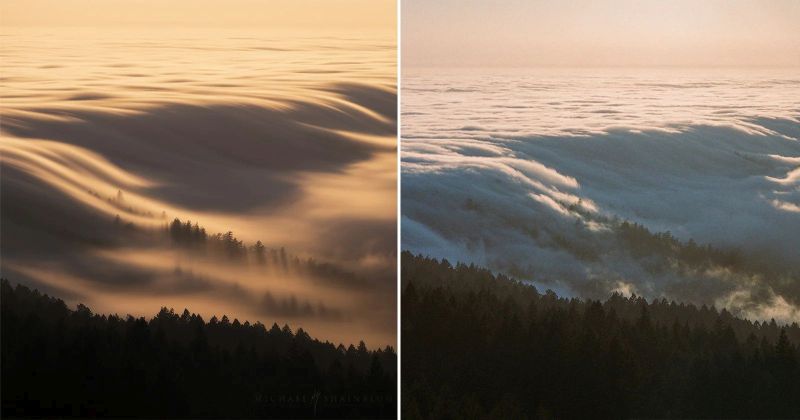
Analog vs. Digital: Which is Better for Ghost Hunting?
The debate between analog and digital cameras is a long-standing one in the world of ghost hunting.
Analog cameras, such as film or Polaroid cameras, are often praised for their ability to capture more subtle energy shifts, which can potentially include paranormal activity.
Recommended read: What Is the Best Spirit Box? Features, Specs, and User Reviews
Some ghost hunters believe that the physical film can capture energy in a way that digital sensors cannot.
On the other hand, digital cameras offer the advantage of immediate feedback. You can review your images or footage right away, which can be crucial in a ghost hunting investigation.
Digital cameras also offer higher resolution and better low-light performance, making them popular among many paranormal investigators.
| Camera Type | Features | Specs | Best Used |
|---|---|---|---|
| Analog | Can capture images and video without the need for digital processing, which some believe may be more likely to capture spirits. Often praised for their ability to capture more subtle energy shifts. | Varies by model, but typically includes high-resolution image capture and video recording. Requires physical film to capture images and video. | Best used in situations where the investigator wants to capture subtle energy shifts that they believe may not be picked up by digital sensors. Also, some investigators prefer them for their aesthetic qualities, as they can produce images with a different look and feel compared to digital cameras. |
| Digital | Easy to use and process, with high-quality image and video capture. Offers the advantage of immediate feedback, allowing you to review your images or footage right away. | Varies by model, but typically includes high-resolution image capture and video recording. Some models also offer advanced features like night vision or full spectrum capabilities. | Best used in most ghost hunting situations due to their ease of use, immediate feedback, and high-quality image and video capture. Particularly useful in low-light conditions due to their typically superior low-light performance. |
Key Features to Look for in a Ghost Hunting Camera
When selecting a camera for ghost hunting, it’s crucial to consider specific features and specifications that can enhance your ability to capture potential paranormal activity.
While the type of camera is important, the features it offers can significantly impact its effectiveness in a ghost hunting context.
Understanding Camera Specs for Ghost Hunting
Resolution: The resolution of a camera refers to the amount of detail it can capture in an image or video. Higher resolution means more detail, which can be crucial when reviewing footage for potential evidence of paranormal activity. A high-resolution camera can capture subtle anomalies that a lower-resolution camera might miss.
Low-Light Performance: Since much of ghost hunting takes place in dark or low-light conditions, a camera’s performance in these conditions is critical. Cameras with good low-light performance can capture clearer, more detailed images in the dark, increasing the chances of capturing potential paranormal activity.
You may also like: How to Make Your Own Ghost Hunting Equipment: Best Tips for Budget Gear
Infrared or Full Spectrum Capabilities: As discussed earlier, the ability to capture infrared or full spectrum light can be a significant advantage in ghost hunting. These features allow the camera to detect energy and light sources outside the range visible to the human eye.
Audio Recording: While not strictly a camera feature, the ability to record audio can be beneficial in a ghost hunting context. EVP (Electronic Voice Phenomenon) is a common focus in paranormal investigations, and having audio recording capabilities can allow you to capture potential EVPs alongside your visual footage.
Battery Life: Ghost hunting investigations can often last for several hours, so a camera with a long battery life is essential. The last thing you want is for your camera to die during an investigation.
Durability: Ghost hunting sometimes involves exploring old, dilapidated buildings or outdoor locations. A durable camera that can withstand a bit of rough handling can be a good investment.
Ghost Hunting Camera Accessories
In addition to the camera itself, there are several accessories that can enhance your ghost hunting investigations:
Tripods: A sturdy tripod can help you capture steady, clear footage, particularly in low-light conditions where camera shake can result in blurry images.
Extra Batteries or Power Packs: As mentioned earlier, ghost hunting can be a long process. Having extra batteries or a power pack on hand ensures that you won’t run out of power in the middle of an investigation.
Camera Cases and Protective Gear: Protecting your camera from dust, moisture, and impact is crucial, especially when investigating in potentially harsh conditions.
External Microphones: If your camera has audio recording capabilities, an external microphone can help you capture clearer, higher quality audio.
Lens Filters: Certain lens filters, such as UV or IR filters, can enhance your camera’s ability to capture full spectrum or infrared light.
Understanding the key features and specifications to look for in a ghost hunting camera and investing in the right accessories can significantly enhance your ability to capture potential evidence of paranormal activity.
It’s not just about having a camera; it’s about having the right camera and the right tools to support your paranormal investigations.

The Difference Between Day and Night Filming in Ghost Hunting
When it comes to ghost hunting, the time of day can significantly impact the type of footage you’re able to capture.
While paranormal activity can theoretically occur at any time, many investigators have found that nighttime investigations tend to yield more results.
This difference between day and night filming in ghost hunting is primarily due to the unique conditions that each provides.
On the same topic: How to Start Ghost Hunting: Expert Techniques, Tips, and Tools
During the day, natural light can make seeing and navigating your surroundings easier.
However, this same light can also make it more difficult to spot subtle anomalies or shifts in the environment – elements that could potentially indicate the presence of a paranormal entity.
Furthermore, daytime investigations often contend with more background noise, both auditory and visual, which can further complicate the process of identifying potential paranormal activity.
Nighttime investigations, on the other hand, offer a different set of challenges and advantages.
The lack of natural light can make navigation more difficult and limit standard cameras’ effectiveness.
However, this darkness can also make certain types of evidence, such as orbs or apparitions, more noticeable.
Furthermore, the quieter conditions often associated with nighttime can make it easier to spot auditory anomalies and can add eeriness to the investigation.
Why Night Vision is Crucial for Paranormal Investigations
Given the prevalence of nighttime investigations in ghost hunting, night vision technology has become crucial for many paranormal investigators.
Night vision cameras amplify existing light to create a brighter, more detailed image in low-light conditions. This allows investigators to see and record in the dark, opening up a whole new world of potential evidence.
In addition to enabling investigators to see in the dark, night vision technology can also potentially capture evidence that would be invisible to the naked eye.
Some paranormal investigators believe that entities may be more visible in the infrared or ultraviolet light spectrum, both of which can be captured by certain types of night vision cameras.
While both day and night filming have their place in ghost hunting, the unique conditions of nighttime investigations and the capabilities of night vision technology make it a crucial aspect of many paranormal investigations.
Whether investigating a haunted house after dark or exploring a cemetery under the full moon, a good night vision camera can be your best friend in the dark.
Can You Use a Regular Camera for Ghost Hunting?
The question of whether a regular camera can be used for ghost hunting is a common one.
The answer is yes, but with some caveats.
While a regular camera can capture images and video just like a specialized ghost hunting camera, it may lack certain features that are beneficial for paranormal investigations.
Regular cameras, for instance, may not perform as well in low-light conditions, a common scenario in ghost hunting. They also typically lack the ability to capture full spectrum or infrared light, which some believe can reveal paranormal entities.
However, a regular camera can still be a helpful tool, especially for those just starting out in ghost hunting or working with a limited budget.
Smartphone Cameras and Ghost Hunting: A Viable Option?
In recent years, smartphone cameras have become increasingly sophisticated, leading some to wonder if they could be used for ghost hunting. The answer, again, is yes, but with limitations.
While smartphone cameras can capture high-quality images and video, they typically lack the advanced features of a dedicated ghost hunting camera.
However, some apps, such as night vision or full spectrum apps, can enhance a smartphone’s capabilities.
While these may not be as effective as a dedicated camera with these features, they can provide a starting point for novice ghost hunters or those on a budget.
Frequently Asked Questions About Ghost Hunting Cameras
What is a ghost hunting camera?
A ghost hunting camera is a camera that has been designed or modified to capture potential evidence of paranormal activity. This can include features like night vision, full-spectrum recording, infrared capabilities, and more.
How do ghost hunting cameras work?
Ghost hunting cameras work by capturing images or video that can then be reviewed for potential evidence of paranormal activity. Some cameras also include features like infrared or full spectrum capabilities, which allow them to capture light outside the visible spectrum.
What features should I look for in a ghost hunting camera?
Key features to look for in a ghost hunting camera include good low-light performance, infrared or full spectrum capabilities, high resolution, long battery life, and durability. Additional features like audio recording can also be beneficial.
Can ghost hunting cameras capture real evidence of ghosts?
While there is much debate about the existence of ghosts and the validity of ghost hunting, many paranormal investigators believe that ghost hunting cameras can capture real evidence of paranormal activity. This can include anomalies like orbs, apparitions, or unexplained movements.
Are there any recommended brands?
There are several brands known for producing high-quality cameras for ghost hunting, including Panasonic, Sony, and Canon for high-end models, and Cleveland Paranormal Supply and Ancter for more affordable options.
Do I need special training to use a ghost hunting camera?
While some ghost hunting cameras can be complex, most can be used with a basic understanding of camera operation. However, understanding how to interpret the images or footage you capture can require more specialized knowledge.
Can I use a regular camera for ghost hunting?
Yes, a regular camera can be used for ghost hunting, although it may lack certain features beneficial for paranormal investigations.
What is infrared night vision and why is it important for ghost hunting?
Infrared night vision lets a camera “see” in the dark by detecting heat sources. This can be important in ghost hunting, allowing investigators to see and record paranormal activity in dark conditions.
Do ghost hunting cameras record audio as well?
Some ghost hunting cameras do have audio recording capabilities, which can be beneficial for capturing potential EVPs (Electronic Voice Phenomena).
Are there any specific camera settings I should use for ghost hunting?
The optimal camera settings for ghost hunting can depend on the specific conditions of your investigation. However, settings that maximize your camera’s low-light performance are generally beneficial.

